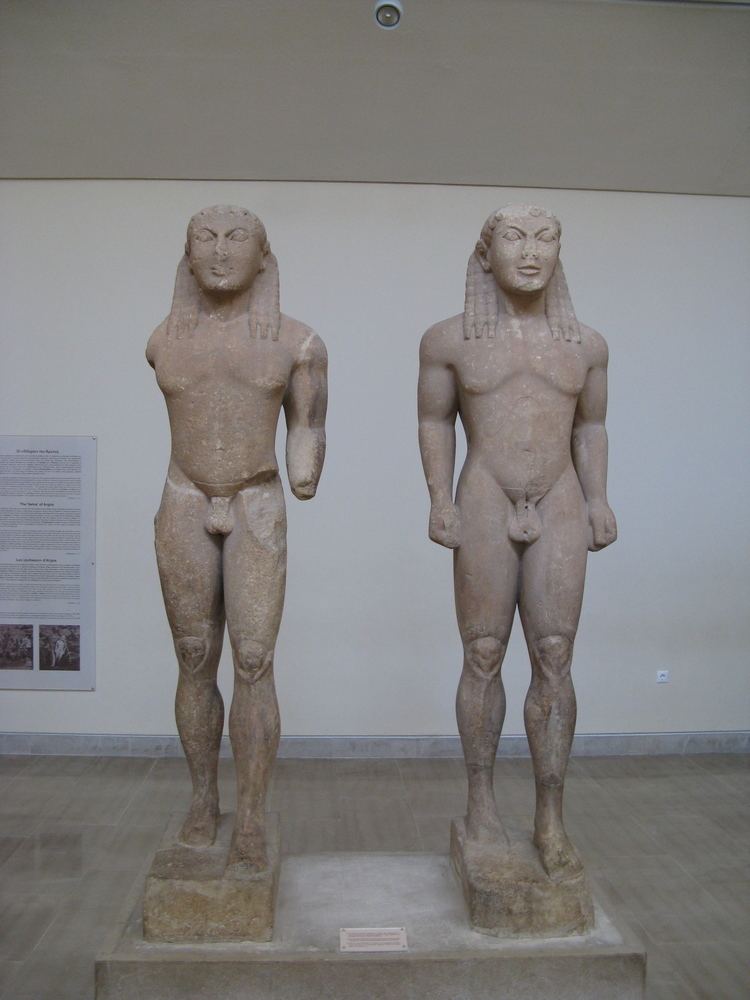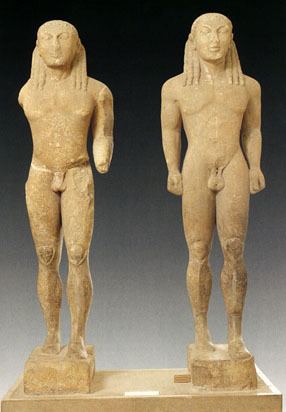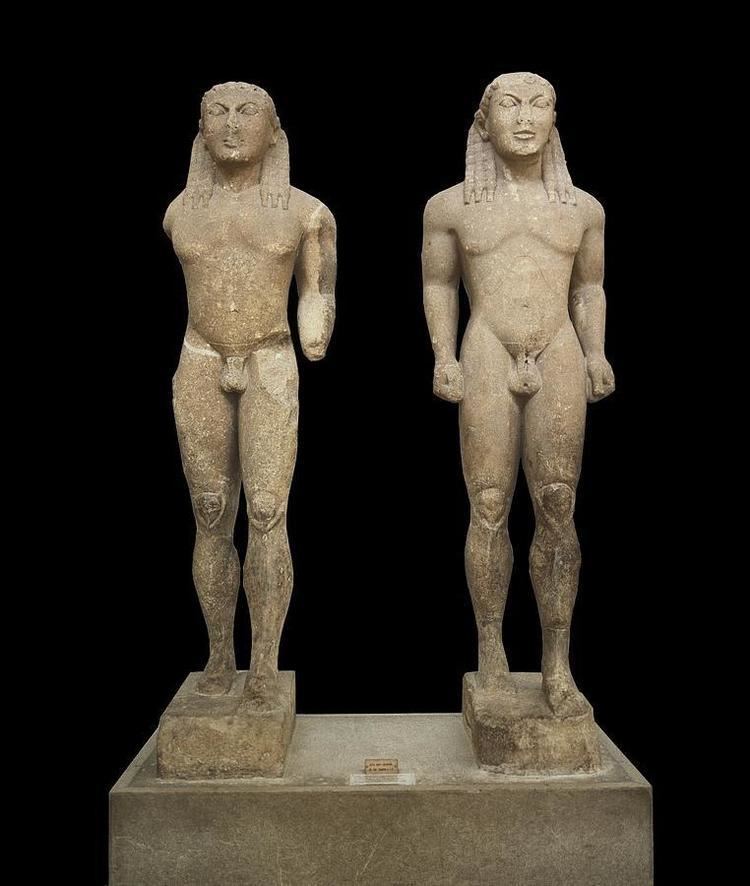 | ||
Similar Moschophoros, Lady of Auxerre, Charioteer of Delphi, Kritios Boy, Peplos Kore | ||
Kleobis (Cleobis) and Biton (Ancient Greek: Κλέοβις, gen.: Κλεόβιδος; Βίτων, gen.: Βίτωνος) are the names of two human brothers in legend related by Solon to Croesus in Herodotus's Histories.
Contents
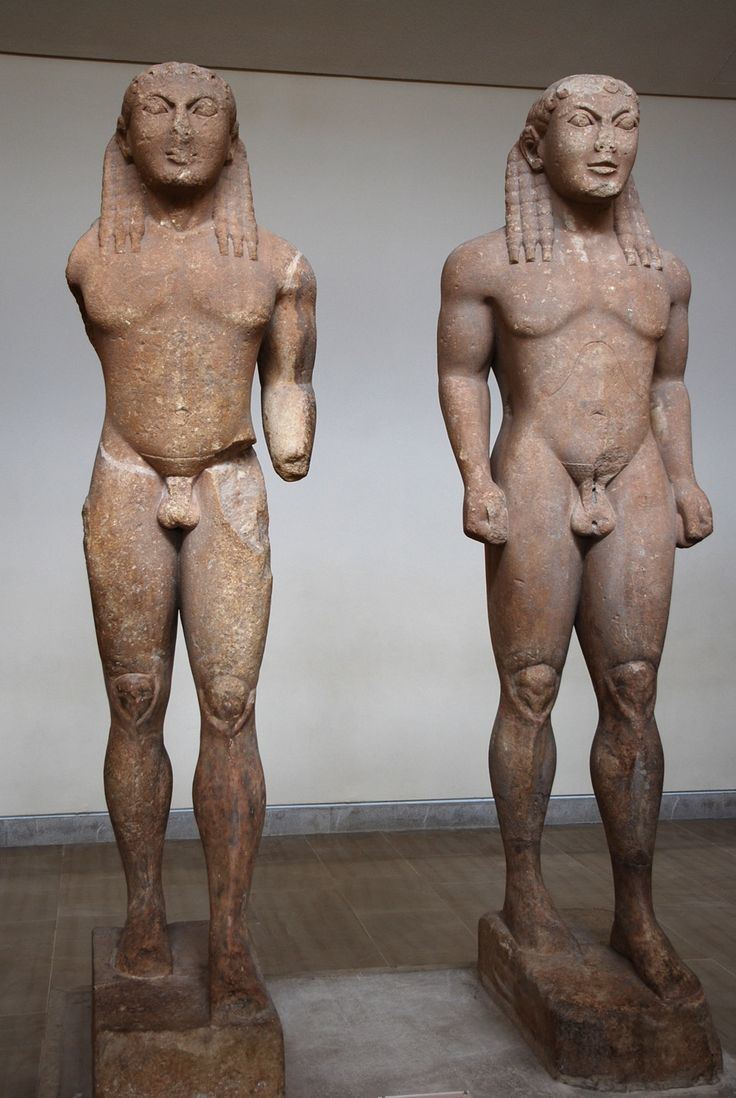
It is also the name conventionally given to a pair of lifesize Archaic Greek statues, or kouroi, which are now in the Delphi Archaeological Museum, at Delphi Greece. The statues date from about 580 BC and come from Argos in the Peloponnese, although they were found at Delphi.
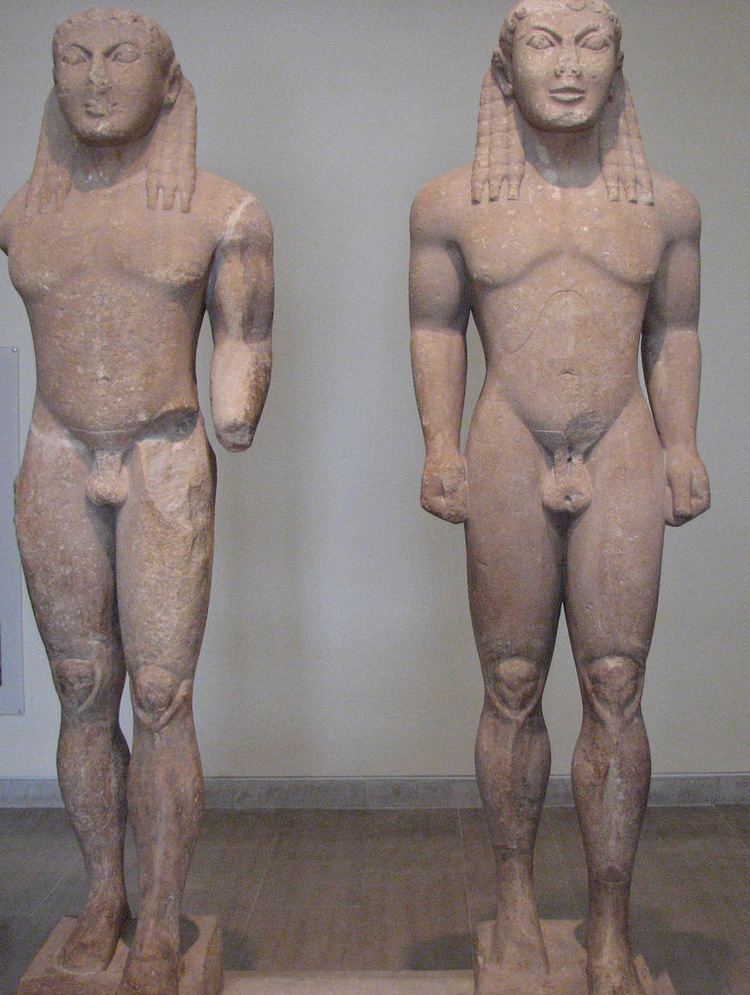
Greek Archaic Art: Kleobis and Biton
The Legend
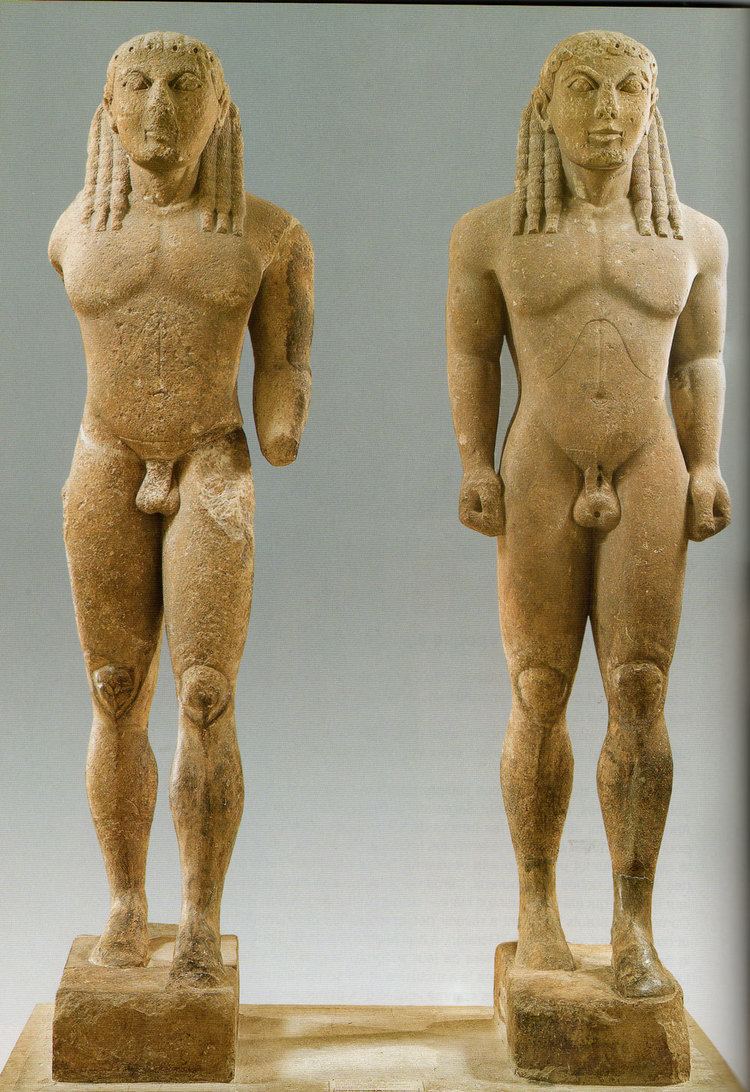
In Book 1 of Herodotus' Histories, Solon tells the story of Cleobis and Biton to King Croesus as an example of a happy life lived, reckoning them second in happiness only to Tellus the Athenian, much to Croesus' annoyance.

In the legend, Kleobis and Biton were Argives, the sons of Cydippe, a priestess of Hera. Kleobis and Biton were travelling from Argos to Heraion with their much beloved mother, to attend the celebration of the Argive Hera. The oxen which were to pull her cart were overdue and her sons, Kleobis and Biton, pulled the cart the entire way (45 stadia, or 8.3 km/5.1 miles). Cydippe was impressed with their devotion to her and her goddess so that when she arrived at the temple she prayed to Hera, asking her to give her children the best gift a god could give to a mortal. Hera attended the prayer. Then, after they had their sacrifices and dinner and the feast was over, the two young men lay for a rest, tired from their heroic act, inside the temple of Hera where they peacefully died. So, with divine assistance, the brothers through their death gained immortality and eternal recognition for the respect and love they had shown toward their mother. To honor the two men, their fellow citizens dedicated the two statues to the sanctuary of Apollo in Delphi.
Statues
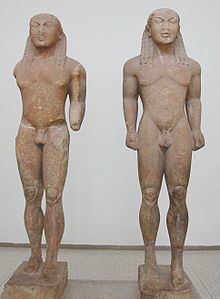
Herodotus records that "the Argives had statues of them made and set them up at Delphi, because they had been such excellent men". The modern Delphi Museum displays two identical Archaic kouroi under the names of Cleobis and Biton, although other archaeologists who have studied the statues, see in them the twin sons of Zeus, the Dioscouri, worship of whom was quite widespread in the Peloponnese.

Inscriptions on the base of the statues identify them as FΑΝΑΚΩΝ (wanakōn), i.e. the "princes", an attribute usually given the Castor and Pollux in Argos, a fact which supported the identification with the Dioscuri. The inscription also identifies Polymedes of Argos as the sculptor: something which was very unusual at such an early date. The statues are in what is regarded as a typical Peloponnesian style: massive and muscular. Their left foot is stepping forward, whereas their hands are bent at the elbows, touching the thighs, hands closed in fists. The hair are curly over the forefront and hang on the shoulders. Their eyes are large and almond-shaped, crowned by high eyebrows. Their faces bear the typical Archaic smile. They wore high-sole sandals. Each figure stood on a different stepping stone but they were both standing on the same pedestal. The date suggested for their creation is ca. 580 B.C. They are considered a typical specimen of the archaic sculpture of the Peloponnese.

